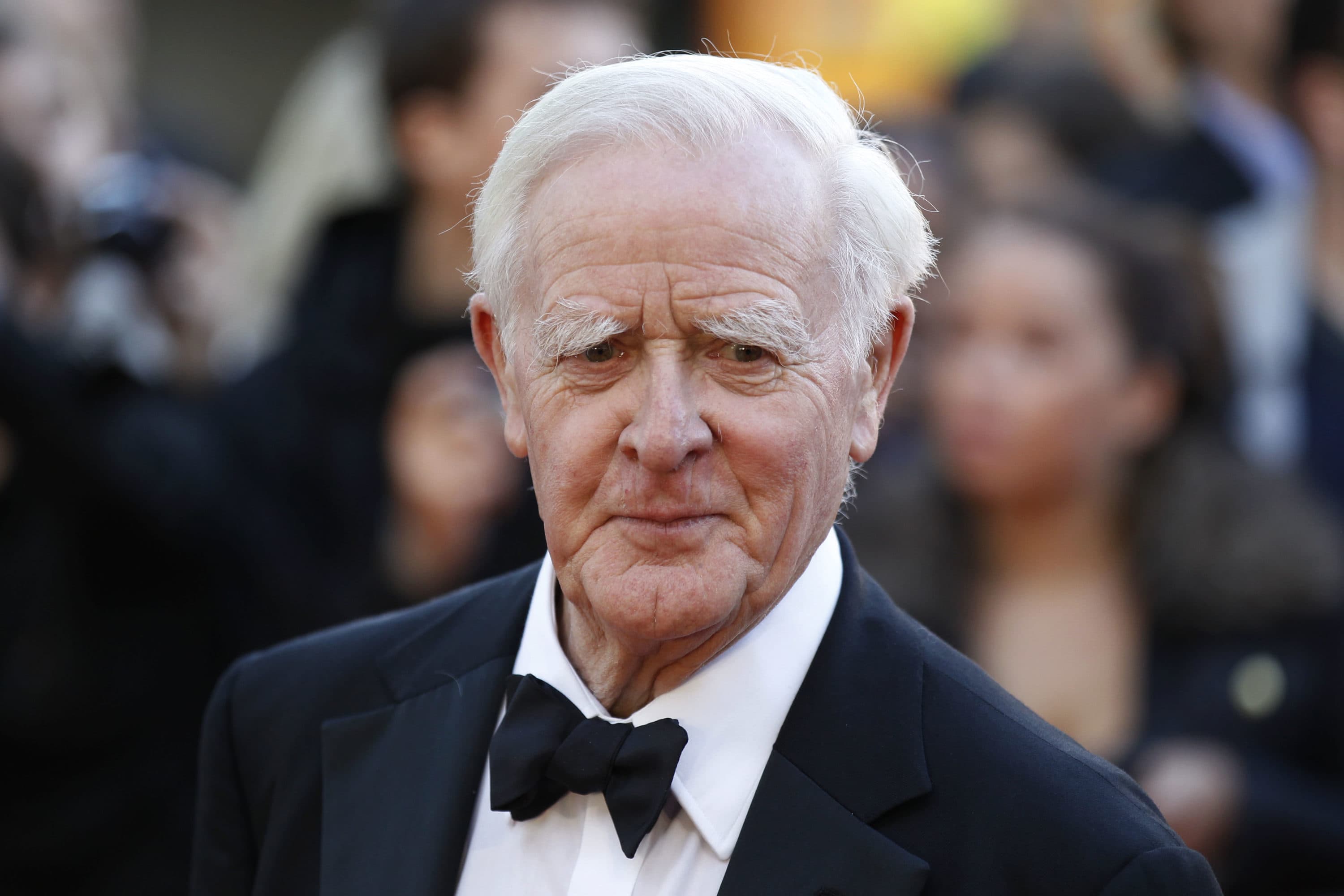Advertisement
Commentary
Lunching With Le Carré — The Dish On Sean Connery And Tom Stoppard Over A Dish Of Wollaston Clams

The last place I had expected to be hanging out with John le Carré was Wollaston Beach, the site of many a torturous summer day growing up in Mattapan. It was hardly Blackfriars Road or The Circus, though those weren’t exotic locales until le Carré poeticized their workaday but treacherous world in books that transcended the spy genre like those of no other writer.
The recently-deceased David Cornwell, le Carré’s real name, was in Boston in the early ‘90s, addressing a group of Boston Globe writers and editors assembled by Editorial Page Editor David Greenway, who had been a distinguished foreign correspondent (the title of his memoir) for the Washington Post and had escorted Cornwell around Southeast Asia as he was researching “The Honourable Schoolboy,” the sequel to “Tinker Tailor Soldier Spy” in the '70s, and then reunited with him in the Middle East for “The Little Drummer Girl.”
I was a Globe television critic at the time and Greenway knew I had adored the British “Tinker” miniseries starring a superbly laconic Alec Guinness as George Smiley. The BBC program reintroduced me to le Carré’s work after drifting away post-“Spy Who Came in from the Cold,” his 1963 masterpiece, later turned into a movie with Richard Burton and Claire Bloom. His depiction of half-angels fighting against half-devils, as one of his characters says, was the perfect description of Cold War morality — and he wrote like a dream.
When I bumped into Greenway that morning he asked, “Eds, how would you like to join Cornwell and me and a couple of our children for lunch?” Before I had time to figure out if I was dressed appropriately for lunch at the Ritz he added, “We’re going to the Clam Box on Wollaston Beach.” I forget whether it was a favorite of David’s or if le Carré wanted to try out New England clams. “Have you ever been?”
Had I ever been. My mother and her three sisters used to drag me there every summer as it was only a half-hour from the house. I hated everything about the beach in general and Wollaston Beach in particular — the sun, the rocky sand, the mud, the freezing ocean water. I’d go in and friends would tell me that I was turning blue. I never did learn to swim (though I was taking lessons a lifetime later when the pandemic hit). Aside from the occasional game of ball, the only redeeming part of going to Wollaston Beach was the Clam Box. My mother tried to keep kosher, but she’d always break down and order clam strips. Maybe she thought she would be forgiven if she didn’t eat the whole bellies. My palate hadn’t accepted clams yet — I’ve made up for that since — so I’d order a hot dog and a milkshake. Talk about not keeping kosher.

Now, about 40 years later, instead of going off to Wollaston Beach with the family or friends — Normy, Billie — in our bathing trunks, I was going to the Clam Box with John le Carré in jacket and tie. It was the kind of middle-class kid’s passage into adulthood that seems like one a le Carré protagonist might make, though he might have killed a person or two on the way. (I only murdered people in my reviews.)

Greenway was equally amused about my childhood days at the beach and as we were all waiting for our clams he pointed to an old-fashioned painting on the wall picturing people in their shoulder-to-thigh onesies and said, “There’s Eds and his family at Wollaston Beach.” The funny thing was that as I remember the painting, there was a guy standing in the same pose that my father assumed at the beach, with both hands clasped behind his back as if he felt exposed and didn’t really know what to do with his body. (My father disliked the beach as much as I did.)
Cornwell was taking everything in, not saying much, until you asked him a question. Then he was off to the races, spinning out long stories and doing the voices of all the parties. The most memorable was a meeting of le Carré, playwright Tom Stoppard and Sean Connery to go over Stoppard’s script for the film version of “The Russia House.” It was a tense meeting, in no small part because Stoppard had recently sued Connery for backing out of the film version of “Rosencrantz & Guildenstern Are Dead” in 1989, for which Connery paid him about $300,000. Cornwell did a perfect Connery — better than Darrell Hammond on “Saturday Night Live” — as he went through the script saying “This is s---. This is s---.” There were other catty remarks and on the way out Stoppard boomed in a voice loud enough for Connery to hear, “Well that takes irony to a whole new level.”
Advertisement
Back at the Globe, le Carré regaled about 20 Globies with stories about his feud with Salman Rushdie (then in hiding because of the Iranian bounty on his head), his writing practices (drinking half a bottle of wine as he was writing) and his dislike of all the movies made from his books except for the aforementioned “Spy Who Came in From the Cold”; the miniseries of “Tinker Tailor Soldier Spy” and the sequel, “Smiley’s People,” also with Guinness; and “The Deadly Affair,” Sidney Lumet’s 1967 film of “Call for the Dead” with James Mason as a renamed Smiley. (There have been several movies or miniseries made from his books since then, including a remake of “The Little Drummer Girl.” He had more of a hand in many of them.)
All in all, a fun day at the office and as I was leaving, Greenway and Cornwell were also walking out. Thinking of his dislike of the movie version of “The Little Drummer Girl,” which had a perfectly miscast Diane Keaton in the lead, I told le Carré that as I inhaled the book about Israelis and Palestinians, I had cast Jenny Agutter in the part. Agutter had been one of my many ‘60s and ‘70s fantasy heartthrobs ever since the movies “Walkabout,” “Logan’s Run” and “Equus.” (You might know her from the more recent “Call the Midwife.”) Le Carré stopped in his tracks and citing Arthur Hopcraft, who co-wrote the “Tinker Tailor” screenplay, he pointed his finger at me and said, "You know, that’s what Hopcraft said to me: 'Agutter. Get Agutter.'"
I got in my car and drove home thinking about life coming full circle at Wollaston Beach and the Clam Box, John le Carré and Jenny Agutter and how I could have been a contender as a casting director. Perhaps when the pandemic is over, David and I can venture back to the Clam Box and lift a glass and a clam to Cornwell. (You can come too, Jenny.)



